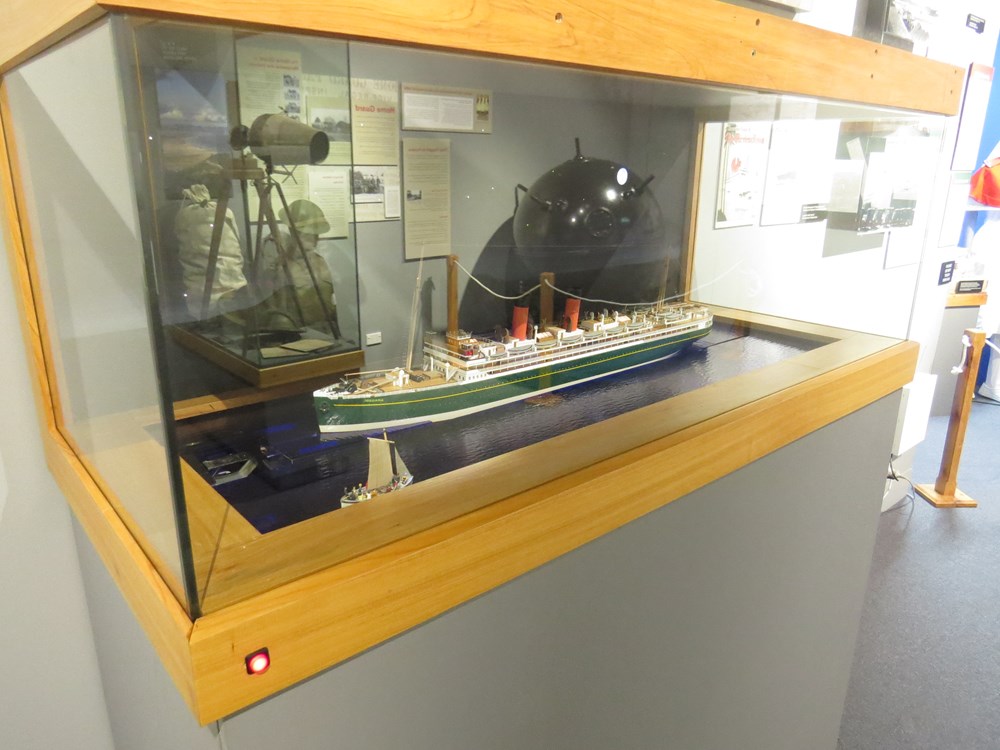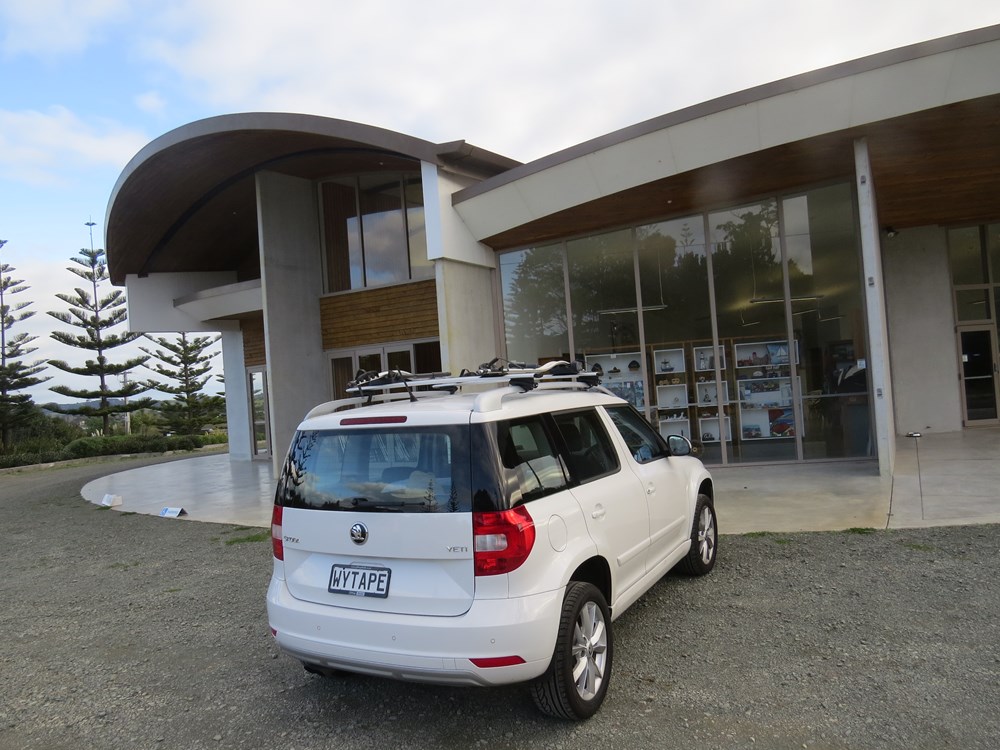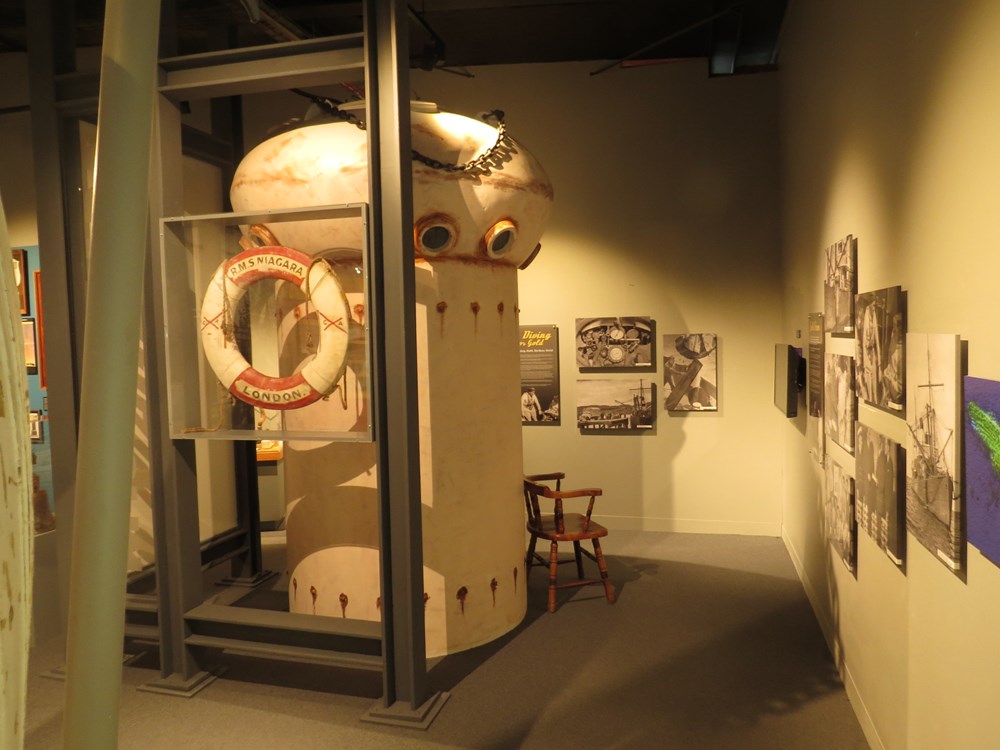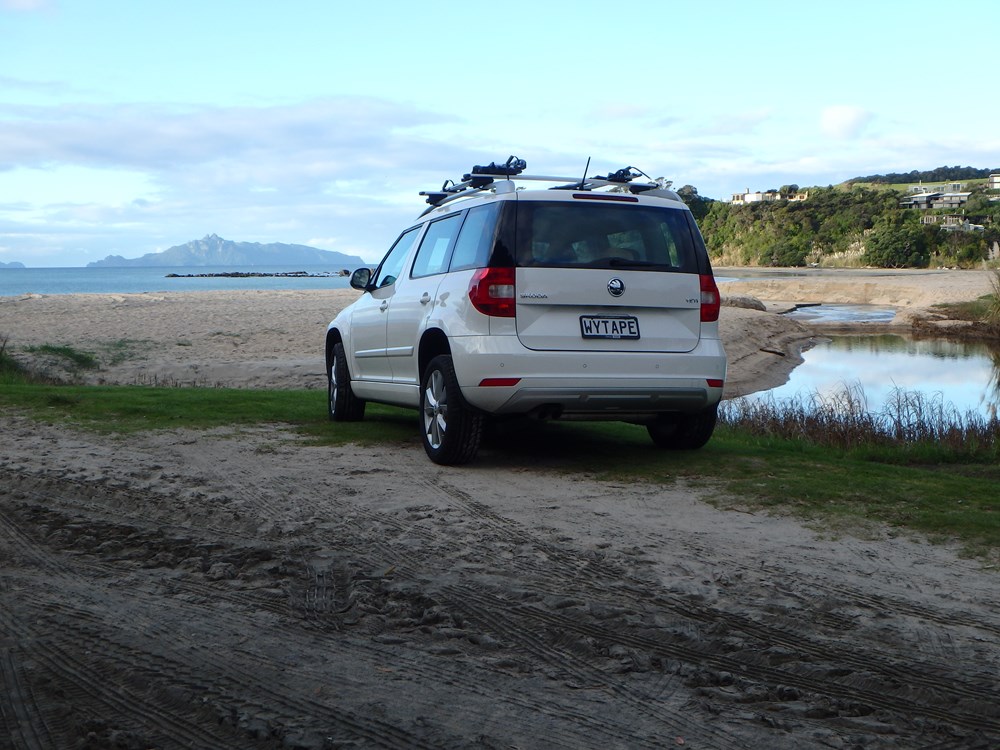Shhh . . . Paul Charman is planning to grab the last five gold bars aboard the Niagara
RMS Niagara had eight tonnes of gold on board when she hit a German mine and went down off Bream Head in 1940.
Most of this (555 bars) were recovered the following year, in the deepest marine salvage operation of the era.
But if you want a piece of the action in 2015, keep reading . . . . maybe I can cut you in.
Salvors took a further 30 bars from the wreck in 1953, but there’s still five bars unaccounted for.

A glass case, housing a working model of the Niagara, reflects a real World War II marine mine, loaned to the exhibition by the Navy.
So, depending on the current price, there’s maybe $3 million in gold still on board, which must be worth another crack.
I passed through Te Hana and steered my Skoda Yeti onto Mangawhai Road.
This almost deserted and very windy back road to the Lower Northland resort provided a discreet route to my objective.
Discretion would be important — I’d need a financial backer, divers, not the kind who blurt out what they know to the media . . .
I reached Langs Beach, parked the Yeti and stared out to sea.
The bars were out there, this I knew, lying about 30 km off-shore and in 122 metres of water.
Only experts in use of mixed-gas rebreather systems could survive a dive to the location I had in mind — the ship’s bullion room.
This has a big hole in the side, thanks to previous salvage efforts.
 Our divers would swim right in, no trouble.
Our divers would swim right in, no trouble.
Cumbersome grab equipment had knocked some of the bars deep inside the ship.
But sifting through the wreckage to find them wasn't the only challenge we’d face.
The gold is still owned by the Bank of England, which was sending it to America to pay for wartime munitions when fate intervened.
Yet who really minds ripping off a bank?
Then I realised there’d also be the challenge of disturbing the fuel bunkers.
The Rena may have released more than 350 tonnes of oil into Tauranga waters, with disastrous consequences, but that’s nothing compared to what this ship was carrying when she went down.
The Niagara may now be just rusty steel subsiding into the ocean floor, but it had four times as much fuel oil on board as the Rena did.

A replica of a diving bell plays dive videos from previous expeditions to the Niagara through its "port holes".
Maritime New Zealand thinks it’s been solidified or dissipated over time.
“All the same, we’d better not use explosives”, I decided.
Needing more time to ponder the operation I parked the Yeti outside Mangawhai’s new $2 million museum.
An exhibition called “War Comes to Mangawhai” is marking the 75th anniversary of the sinking of the Niagara, which happened on June 19, 1940.
There’s a full account of the actions of the German Raider Orion, which mined all the entrances to the Waitemata Harbour, sinking the Niagara and another ship.
There’s photos, models, first-hand-accounts from locals, all kinds of background material me and my crew will need.
There’s a walk-in model of one of the diving bells used to ransack the bullion room, dive videos, a 3D sonar image of the wreck provided by the Navy, even one of the now disarmed mines dropped in the Waitemata.

The gold's out there alright, about 30km off shore and in 122 metres of water.
It was interesting, sure, but also made one feel rather drained.
Getting a team together to raid what’s left of the Niagara . . . Perhaps?
Meanwhile I’d contemplate it all, with a flat white and cheese scone from the museum’s excellent cafe.
The Niagara wreck is owned by New Zealand underwater explorer Keith Gordon, whose 2005 book "Deep Water Gold" is recommended reading.




